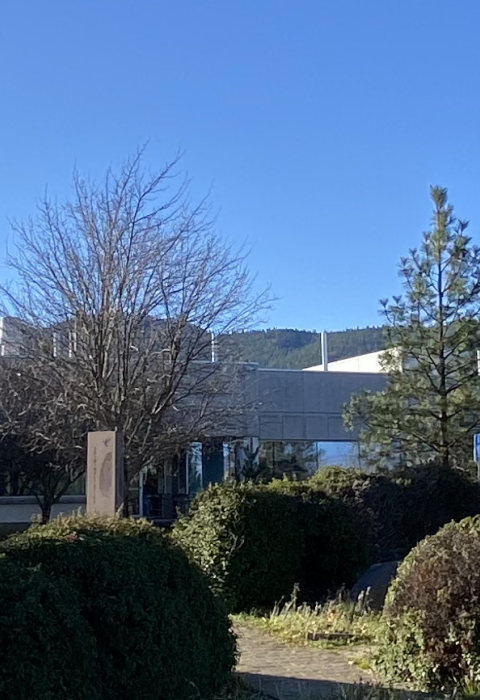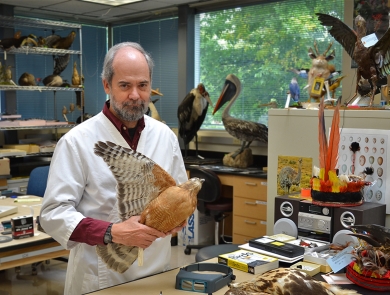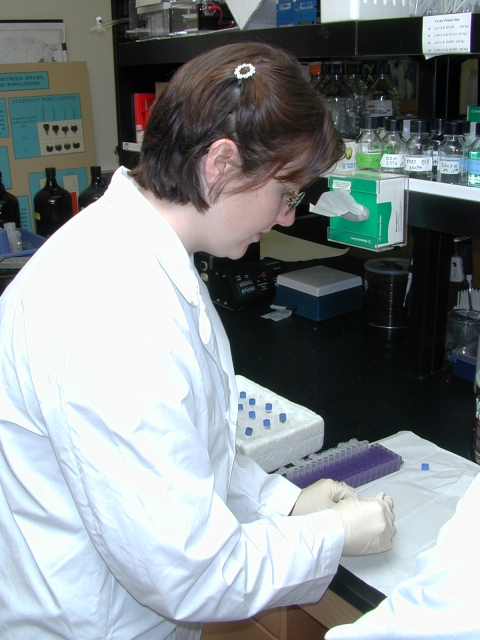We examine, identify, and compare evidence using a wide range of scientific procedures and instruments, in the attempt to link suspect, victim, and crime scene with physical evidence.
About Us
About the Lab
Why do we need a Crime Laboratory for Animals?
In order to prosecute an individual for a violation of law, our criminal justice system requires that the individual's guilt be established 'beyond a reasonable doubt.' Two ways that prosecutors can link the suspect to the victim and to the crime (and thereby meet the 'beyond a reasonable doubt' requirement) are to present to the court....
- Eye Witness Testimony
- Physical Evidence
However, because the reliability of eye-witness testimony is often considered questionable at best (often depending upon the circumstances of the observation, as well as the reputation and perceived self-interest of the witness), prosecutors often insist that investigators obtain linking physical evidence and relevant expert witness testimony before they are willing to take a case to court.
Prior to 1988, wildlife law enforcement officers at the federal and state levels were at a distinct disadvantage in taking their cases to a prosecutor because they had little or no access to wildlife-related forensics services. By providing wildlife-related crime laboratory services (analytical techniques and corresponding expert witness testimony) to these investigators, serious violations of wildlife laws can be successfully investigated and serious violators can be successfully prosecuted.
What We Do
The primary mission of the laboratory is to:
- Identify the species or subspecies of pieces, parts or products of an animal.
- Determine the cause-of-death of an animal.
- Help wildlife officers determine if a violation of law has occurred.
- Identify and compare physical evidence in an attempt to link suspect, victim and crime scene.
Identify and compare physical evidence in an attempt to link suspect, victim and crime scene.
In performing this mission, we support federal law enforcement efforts of our 200+ Special Agents and Wildlife Inspectors throughout the United States, all fifty State Fish & Game Commissions, and approximately 150 foreign countries who have signed the United Nation's CITES (Convention on International Trade in Endangered Species) Treaty. View more about CITES on our U.S. Wildlife Laws page.
Any research that we conduct is specifically directed toward the species-source identification of wildlife parts and products. We do not expect (or intend) to receive any live animals at the laboratory, nor will we be conducting any research regarding the habitat, behavior or management of wildlife.
"Our mission is working with others to conserve, protect, and enhance fish, wildlife, and plants and their habitats for the continuing benefit of the American people."
Get Involved
Volunteers at the Forensics Laboratory
Volunteers play an important role in many projects that are vital to the National Forensics Laboratory. Our volunteers range from high school and college students to senior citizens.
There are two types of volunteers at the Forensics Lab: clerical and technical.
- Clerical volunteers create and maintain data support for the scientists at the Lab. They type lists of species, create data bases and organize and maintain freezer data bases of all the standards in the Lab collection.
- Technical volunteers assist in developing techniques to identify species and to determine the genetic variability of a particular taxa. They also prepare specimens for the Morphology standards collection.


